Splashdown!
Aurora 7 was four hours, 32 minutes and 47 seconds into its flight, travelling at over 17,000 miles per hour, orbiting over Hawaii for the third time when the gyro warning light appeared on Scott Carpenter’s control panel, requiring the manual firing of the retro rockets for re-entry. The mission up to that point was considered a great success, but instrumentation error and a partially distracted astronaut led to the splashdown being considerably off-target, along with a waterlogged watch.
Sixty years ago today, on May 24th, 1962, after a trouble-free countdown, Carpenter (aboard Aurora 7) lifted off into space at 07.45 EST (12.45 UTC). His was the first scientific flight and he became the first American astronaut to eat solid food in space. Inadvertently Carpenter identified the mysterious “fireflies” observed by John Glenn during Friendship 7 as particles of frozen liquid dislodged from the outside of the spacecraft when he bumped the wall of his capsule near the window.
Scott Carpenter’s Aurora 7 capsule on Mercury Atlas 7 lifts off from Pad 14, Cape Canaveral, Florida, May 24th, 1962. © NASA
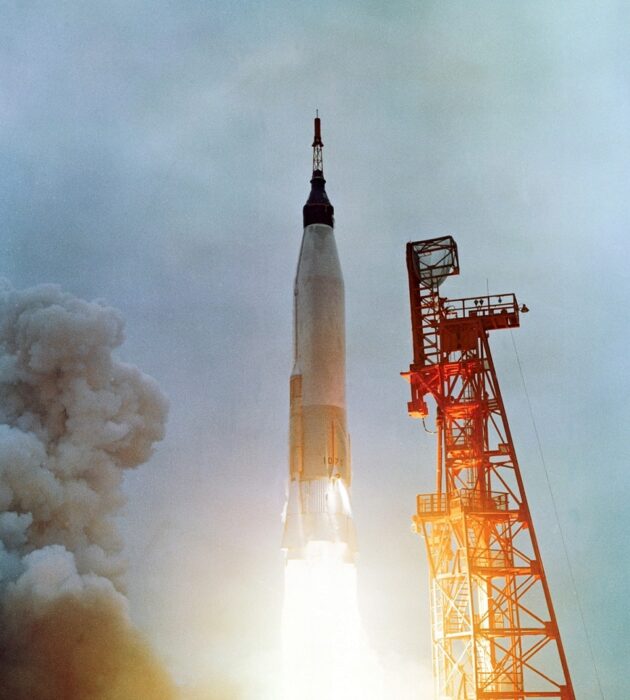
Partly because Carpenter had been distracted watching the fireflies, he began his landing preparations late. As the timing mechanism on the spacecraft for the retro rockets had also malfunctioned, he had to align the spacecraft manually. Doing so, he fell behind in his checklist of other items, so that when the switch was made to the fly-by-wire control, the manual system remained engaged, and using both together for 10 minutes resulted in wasted fuel. Aurora 7 overshot the re-entry point and splashed down a considerable distance from the intended location.
Scott Carpenter is hoisted aboard a Navy helicopter which flew him to the aircraft carrier USS Intrepid © NASA
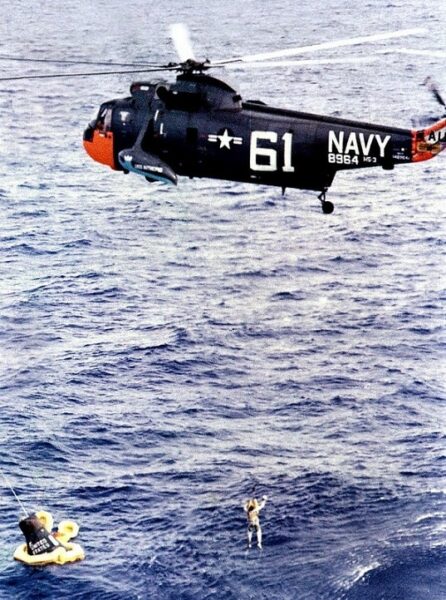
Knowing that the recovery vessels might take some time to get to him, and aware of the danger of Aurora 7 potentially sinking, Carpenter made his way out through the neck of the spacecraft. In doing so he inadvertently knocked and damaged the seal on his Breitling Cosmonaute. He inflated his life raft, climbed onto it and awaited rescue. After nearly an hour of searching, Carpenter was located in an area northeast of Puerto Rico; but it took three more for the rescue helicopter to reach him. While the astronaut had suffered no ill effects from the impact and the time at sea, it was to prove fatal to the damaged watch.
First Contact
Malcolm Scott Carpenter, a naval aviator, was selected as one of Mercury Seven, America’s first astronauts, selected to fly spacecraft for Project Mercury and immortalised in Tom Wolfe’s book: The Right Stuff and Philip Kaufman’s movie of the same name. Their selection was the subject of a much publicised and rigorous search, and the finalists were announced at a press conference on April 9th, 1959.
On April 9th, 1959, NASA introduced its first astronaut class, the Mercury 7, front row, far right M. Scott Carpenter © NASA

Back in the middle of the 20th century, the astronauts who were part of the space programme were also required to undertake other tasks outside of flying the capsule. As it was not known what the pilot would require or need in terms of anything when flying in space, it was very much a case of necessity being the mother of invention, a voyage into the unknown.
Carpenter, along with the other six astronauts, oversaw the development of the Mercury spacecraft. Apart from being required to fly the capsule, each had an assigned speciality; Carpenter was given responsibility for instrumentation and the onboard navigational equipment. By way of other examples, Alan Shepard focused on the recovery of the astronauts upon landing and egress from the capsule, and John Glenn focused on optimizing the cockpit and the flight simulator.
Scott Carpenter is helped into his Aurora 7 spacecraft for the Mercury Atlas 7 mission on May 24th, 1962. © NASA

Scott Carpenter had encountered the Breitling Navitimer when flying with the RAAF (Royal Australian Airforce) in 1960. When tasked with instrumentation for the Mercury capsule, he worked in cooperation with Breitling to change the basic Navitimer used by the RAAF with a simplified tachymeter scale, a wider bezel and a 24-hour dial. The reasons were simple. When flying in space there was only a need to consider the total time taken and measured in hours, minutes and seconds. The wider bezel was to help move the tachymeter with the astronaut gloves on, and the reduced scale would help improve legibility and remove unnecessary information.
The Breitling Navitimer Cosmonaute was the first purpose-designed and Swiss-made chronograph in space, worn by the man who principally commissioned it. The watch became an essential piece of flight equipment for the astronauts, as when you are hurtling around the world at over 17,000 miles per hour, every second truly does count.
Philip Kaufman’sThe Right Stuff (1983) was nominated for 8 Oscars and won 4.
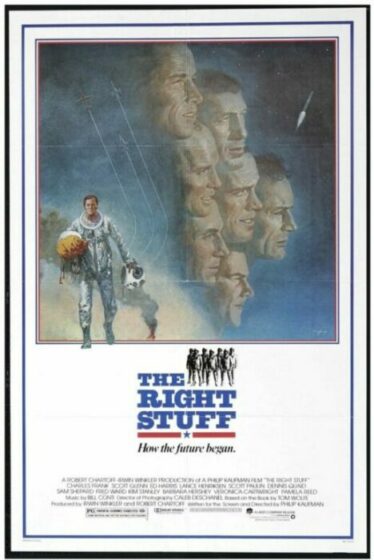
During Aurora 7’s flight, Carpenter and Mission Control were constantly checking the capsule clock against the watch and the time at Cape Canaveral, Florida; the transcript shows that the former was continually one to two seconds away from CAPCOM. More to point, when the astronaut delayed the firing of the retro rockets for re-entry, every second delayed was five miles added to the trajectory error. Carpenter was three seconds late. The problem was compounded, as the difference in trajectory would add considerably more miles to the splashdown point on Earth’s surface. Carpenter overshot his planned mark and ended up 250 miles from the intended location.
Lost in Space
Once the rescue helicopter landed on the USS Intrepid, Carpenter noticed that the watch no longer worked. It was sent back to Breitling for repair. On seeing the extent of the damage, Breitling simply sent a new one back as well as supplying the same Cosmonaute to some of the other Mercury Seven. John Glenn’s came up for sale at auction back in 2019 and was acquired by Gregory Breitling.
Scott Carpenter’s original Cosmonaute was simply placed in a watchmaker’s bench draw at the factory. Nothing more was to be done to restore it or to try and make it work. For all intents and purposes, it was lost to the world and was left to deteriorate and corrode. When the ownership of Breitling was transferred, it was retained by the Breitling family. Sixty years to the day since it first flew into space, Breitling unveiled Scott Carpenter’s untouched watch, alongside John Glenn’s original, and a new commemorative edition of the Cosmonaute.
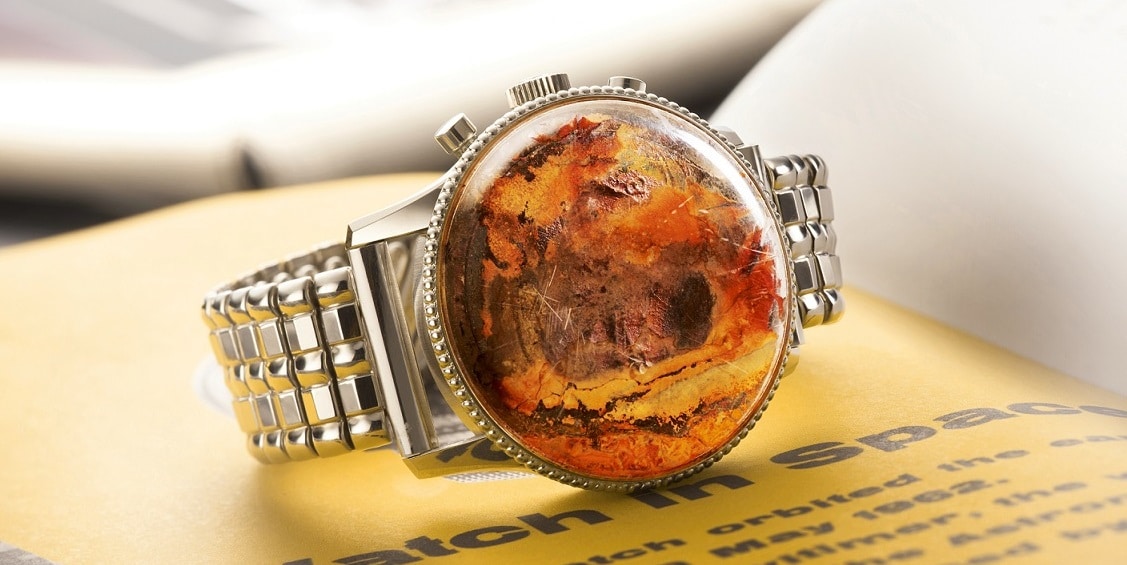
Scott Carpenter’s original Breitling Navitimer Cosmonaute was worn during his Mercury-Atlas 7 mission in 1962.
Commemorative Edition
To celebrate the anniversary of Carpenter’s flight, and Breitling’s ascent as the first purpose-designed and Swiss-made chronograph in space, a new commemorative edition has been released. For the most part, the limited edition stays true to the original Cosmonaute design, while adding some elements to show that this is a watch that honours that first flight.
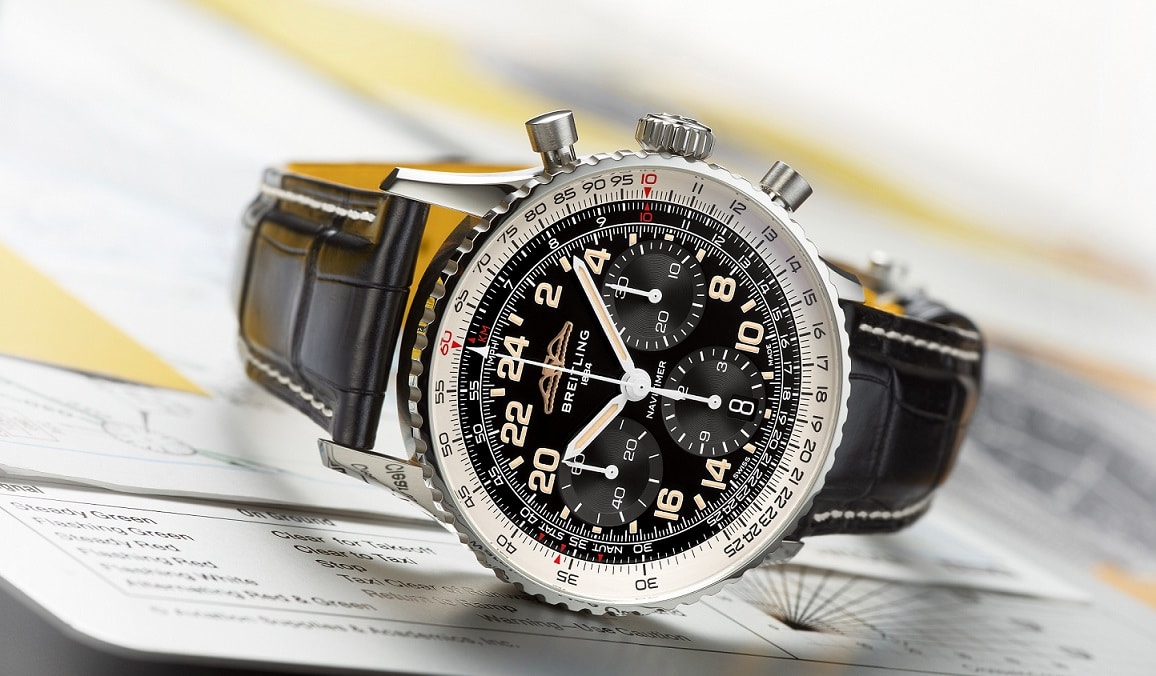
Breitling Navitimer Cosmonaute 60th Anniversary Limited Edition 2022
The same all-black 24-hour dial and reduced form tachymeter are kept, but the watch is now slightly smaller (at 41mm diameter) with a platinum bezel that is fluted (rather than beaded). The commemorative edition also features a sapphire back that provides a window on the B02 movement with its special bridge engravings to mark the occasion: the words “Carpenter,” “Aurora 7,” and “3 orbits around the Earth,” along with the Mercury space capsule. The commemorative edition is limited to 362 numbered pieces that recognise the number of orbits made by Carpenter (3) and the year in which he flew (’62). The watch is available on a black alligator strap or a seven-row stainless-steel bracelet.
Caseback of the Breitling Navitimer Cosmonaute Limited Edition.
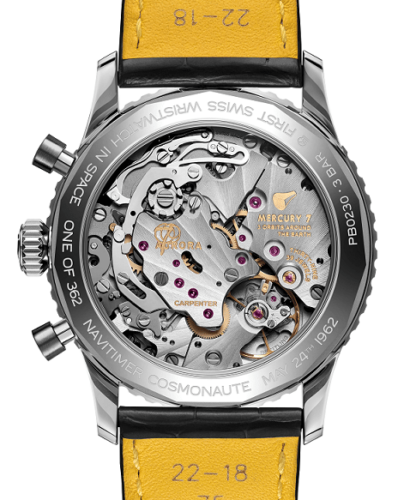
Epilogue
While Carpenter denied ever causing the fault, and the post-incident report confirmed that the instrument failure had nothing to do with the astronaut, the head of CAPCOM: Alexander Kraft, Jr. (who had been against Carpenter from the start) came to the conclusion that it was pilot error. Kraft swore that Carpenter would not fly in space again and in fact, in his biography published almost 40 years later, the chapter on the Aurora 7 mission was titled: “The Man Malfunctioned”. In a letter to The New York Times, Carpenter called the book “vindictive and skewed”, and offered a different assessment: “In space, things happen so fast that only the pilot knows what to do, and even ground control can’t help.”
With little prospect of reaching the space again, and perhaps as a result of his spending time on the ocean waiting to be picked up by the USS Intrepid, Carpenter changed his career to exploring the seas as an aquanaut. He took a leave of absence from NASA to join the U.S. Navy SEALAB project, although during training he suffered injuries that grounded him, making him unavailable for further spaceflights.
Words: Dr Andrew Hildreth
Watch: Mercury Aurora 7 – Scott Carpenter’s Famous Flight | NASA
Opening picture: Scott Carpenter inside Aurora 7 with the Breitling Cosmonaute on his left wrist © NASA





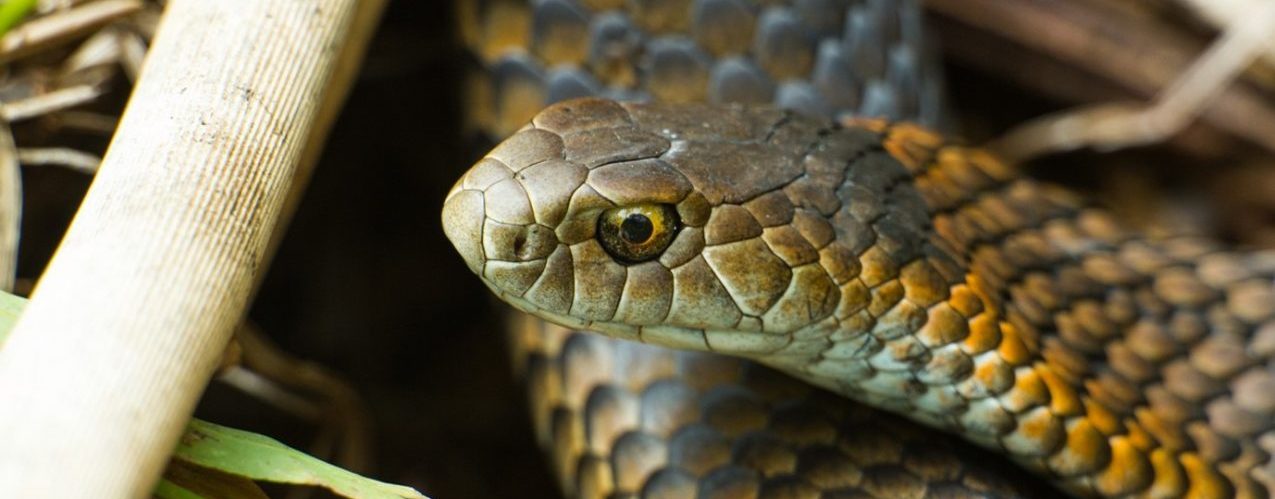








Show Comments +